Vietnam Catfish Anti-Dumping Case: US Trade Dispute Analysis
advertisement
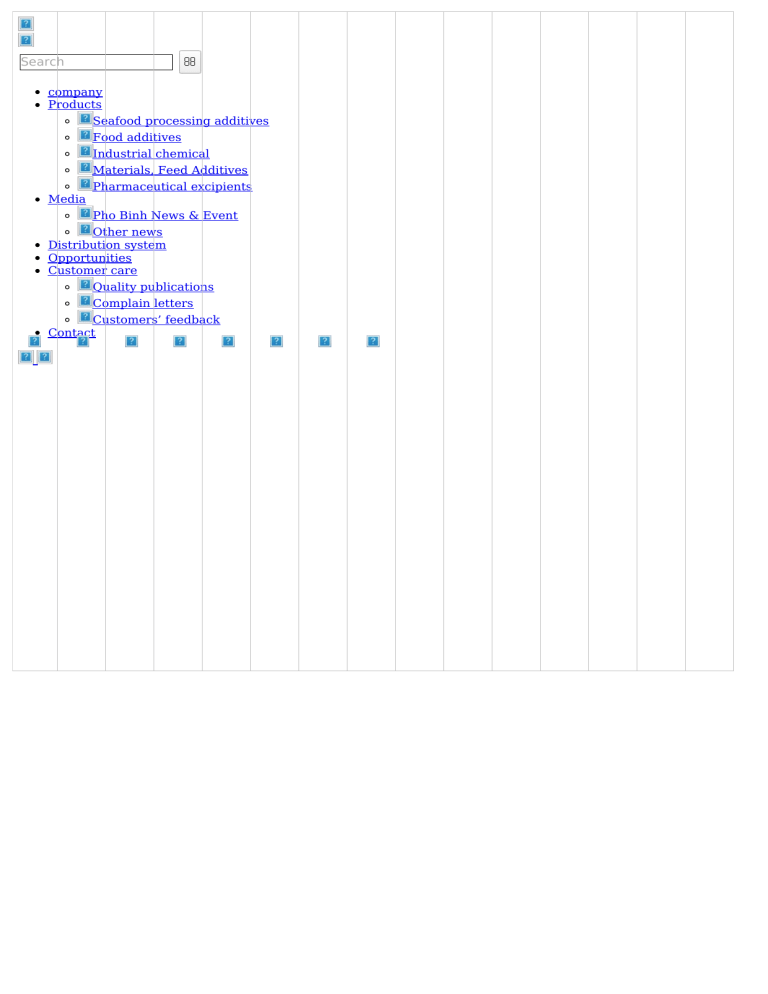
Search company Products Seafood processing additives Food additives Industrial chemical Materials, Feed Additives Pharmaceutical excipients Media Pho Binh News & Event Other news Distribution system Opportunities Customer care Quality publications Complain letters Customers’ feedback Contact Anti-dumping case of Vietnam Catfish in US market Abstract The “Vietnam Catfish war” was a famous yet controversial case in recent trade disputes. The U.S. Anti-dumping law protects American industries from supposedly unfair import competitions (Lindsey, 1999, p.2). On June 28, 2002, the coalition Catfish Farmers of America (CFA) and eight individual fish processors filed an anti-dumping petition against imports of “certain frozen fish fillets from Vietnam” under the US. Anti-Dumping Law to the Department of Commerce (DOC) and the International Trade Commission (ITC) (Le, 2004, p.1). Over one year after the original investigation conducted by the US. DOC, the case was finally concluded with the imposition of anti-dumping duties on imports of fish fillets from Vietnam. The range of the duties is between 37 and 64 percent on value of imports (Reynolds & Su, 2005, p. 40). This is what the US. Government said, is it true that the Vietnamese government subsidizes Vietnamese firms in Mekong Delta to unfairly gain a better market share in the U.S.? Or is it just the result of domestic political lobby in the U.S.? This paper will try to discuss related issues surrounding the story of that catfish war. The paper will go through the steps used in the class: issue, rules, analysis, and conclusion (I.R.A.C). Introduction the ISSUE Raising catfish is an important source of income for households residing in the Mekong Delta in Southern Vietnam for more than 50 years (Nguyen, Nguyen & Phillips, 2004, p.20). Catfish is also produced in the Southern United States where it is a major source of income for fish farmers in Mississippi, Arkansas, Alabama and Louisiana (Hanson, 2005, p.1). In 2002, aquatic products represented 12 percent of total exports from Vietnam, and export value frozen fillets (mostly catfish) is 18 percent of the total value of aquatic exports (VASEP website). The increase participation of cheaper Vietnamese catfish in the U.S forced the Catfish Farmers of America (CFA) to lead a move to halt catfish imports. First, Vietnamese products were forced to be labeled as “Tra” and “Basa” instead of “Catfish”. Second, on the ground that Vietnamese government subsidized Vietnamese catfish farmers, in January 2003, the U.S. Department of Commerce ruled in favor of the antidumping claim and established duties ranging from 37 to 64 percent on imports of frozen catfish from Vietnam (Reynolds & Su, 2005, p. 40). In July 2003, the U.S. International Trade Commission ratified the ruling. As a result, Vietnamese exports of catfish to the U.S. plummeted, almost being shut down completely. Other facts According to the U.S. International Trade Commission, the catfish industry is the largest farm-raised fishing sector in the U.S. In 1999, it accounted for 80 and 64 percent of aquaculture production in volume and value, generating 440 million U.S. dollars (Hanson, 2005, p.1). The delta of the Mekong river, in South Vietnam, also provides a good habitat for catfish. Known as Basa and Tra, Vietnamese catfish raised in ponds and cages that are placed in the river itself. In 1996, two years after the trade embargo of US.against Vietnam was lifted, Vietnam started exporting frozen fillets of Basa and Tra to the U.S. with sales of a few hundred tons and initially marketed as “Chinese sole”. West Coast Chinese restaurants responded allowing Basa to take one percent of the US. catfish market (Nguyen, Nguyen & Phillips, 2004, p. 22). The level of exports increased significantly in the early 2000s, reaching a market share in U.S. consumption of catfish of 8.4 percent in 2000 and 19.6 percent in 2002 (Hanson, 2005, p. 4). Also between 2000 and 2002, Vietnamese production capacity expanded by 100 percent, and approximately 50 percent of Vietnamese Tra and Basawas sold in the U.S. market. The increasing popularity of Vietnamese catfish raised the concern of the Association of Catfish Farmers of America (CFA), and the CFA took action. At fist, by forcing Vietnamese catfish to change names from “Catfish” to “Basa” and “Tra” by the new labeling law being instituted in January 2002 (Reynolds & Su, 2005, p. 37). The trade description legislation was used to restrict the name of “catfish” solely to Ictalurids grown in the USA, while “Basa” and “Tra” are also freshwater fish of same family. “Basa” (PangasiusBocourti) and “Tra” (PangasiusHypophthalmus) are among 35 other types classified by the name in English “Catfish” (Nguyen & Doan, 2004, p.21). However, as most Vietnamese catfish was being sold to American wholesale distributors, not final consumers, a change in names was not enough. Though not labeled “catfish” anymore in the United State, these fillet products continued to be popular in North America not only on account of their competitive price, but, more importantly, their good taste (Nguyen, Nguyen & Phillips, 2004, p. 22). On 28 June 2002, the CFA filed anti-dumping lawsuit against Vietnam, naming the Vietnam Association of Seafood Exporters and Processors (VASEP) as the defendant in the case, representing 56 seafood processors in Vietnam. A few months later, in January 2003, the U.S. Department of Commerce ruled in favor of U.S. farmers, arguing that Vietnamese exporters were dumping frozen fish fillets on U.S. markets by margins that varied exporter between 37 and 64 percent of normal value (Reynolds & Su, 2005, p. 40). Finally, in July 2003, the U.S. International Trade Commission found that American catfish processors were materially injured by imports from Vietnam, confirming the application of antidumping import tax rates equivalent to dumping margins of 37 to 53 percent (Nguyen & Doan, 2004, p. 5). What are the RULES involved here? According to Peacock (2004, p. 3), dumping is the exporting of produce at less than production cost to the material detriment of competitor industries in the importing country. The recourse by the plaintiff-the importing country-is to impose bans and or compensating duties (duty orders) on the rogue products in legitimate protection of their own industry, as a re-leveling of the playfield. These are call anti-dumping measures. Antidumping suits are anti-competitive tools heavily subsidized U.S. industries use to slap tariffs on imports from countries they claim are too heavily subsidized. But the U.S. Department of Commerce could not find any evidence that Vietnam government was significantly subsidizing the country catfish industry. Vietnam was just simply making better, cheaper catfish. We look at the case in a more legal sense and approach. What is dumping? According to Lindsey (1999), we know it that there is Anti-dumping law in the US. Specially, it imposes extra duties on goods from a particular country or group of countries if three conditions are met: first, the Department of Commerce must find that the goods are being sold in the United States at “dumped” prices; second, the International Trade Commission must determine that the import in question are causing or threatening “material injury” to domestic producers of the “like products”; and third, the dumped goods are the cause of the injury or threatened injury (p. 1). We tried to explain the case under the light of the current Anti-Dumping Code, the Agreement on Implementation of Article VI of GATT, Article 2, paragraph 1, (August, 2006, p. 401) and which gave: … [A] product is to be considered as being dumped, i.e., introduced into the commerce of another country at less than its normal value, if the export price of the product exported from one country to another is less than the comparable price, in the ordinary course of trade, for the like product when destined for the consumption in the exporting country. Anti-dumping Code does not prohibit dumping. According to August (2006, p. 402), an investigation to determine the existence, degree, and effect of an allegedly dumping may be initiated (1) “upon a written application by or on behalf of the [effected] domestic industry” (Id., Article 5, para. 1), (2) “in special circumstances” by governmental authorities of the affected state (Id., Article 5, para. 6); or (3) by an application made by authorities of an affected third country (Id., Article 14, para. 1). To prove a dumping, in any of these cases, the application must disclose evidence a combination of three below: (a) dumping, (b) material injury or threat of injury to, or material retardation to the establishment of a domestic industry, and (c) a causal link between the dumped imports and the alleged injury. (Id., Article 5, para. 2 and 6; and Article 14, para. 2) Analysis How did the Department of Commerce proved all the three above in the case of Vietnamese catfish? For (a) dumping? According to Reynolds & Su (2005, p. 38), average production cost of one kilogram of catfish made in Mekong Delta of Southern Vietnam in 2003 is 10,398 Vietnam dong, or an equivalent to 65 U.S cent, while it was sold at the ex-factory price of 1.44 U.S. dollar for one kilogram. At the same time, average cost of production of American catfish farmers was U.S. $1.65 dollar per kilogram. The differences between that of average cost of production of catfish in the U.S and selling price of Vietnamese exporters was interpreted by the CFA as dumping margin, stood at 190.20 percent ! (Nguyen & Doan, 2002, p. 5). What are the grounds the CFA used for proving “dumping”? According to Nguyen & Doan (2002, p. 41), the CFA’s appointed law firm Askin Gump showed in the file to US. International Trade Commission on 28 June 2002 are: Vietnam is non-market-economy [1] Vietnamese worker are underpaid, and in accordance to range of salaries set by the government, and thru, the paying system created an unfair competition. Quantities of tra and basa fish imported to US market increased year after year, and caused the selling prices to go down. Mis-leading labeling caused confusion when using the same channels of distribution in US. market. Took the cost of production of a like-product ClariasBatrachus produced in India as a loading factor in comparison and other production cost in Bangladesh as base cost. Requested the Department of Commerce and the International Trade Commission to load / impose an anti-dumping duty of 191 percent or 141 percent in case it is later confirmed if Vietnam economy is an non-market economy or a market economy respectively. The petitioners alleged that Vietnamese frozen fish fillets were sold in the US at less than its production value, and such imports were materially damaging the domestic catfish industry. According to Nguyen, Nguyen & Phillips (2004, p. 23), the CFA petition said Vietnamese tra and basa imports have increased from 1.9 million pounds in 1999 to 7 million pounds 2000, to 17.1 millions pounds in 2001, and now (mid 2002) equal to almost 19.6 percent of the US catfish Newsinnewest market (Reynolds & Su, 2005, p. 37). In addition, the petitioners claimed that the low price of Vietnamese fish has caused price for US catfish to drop sharply (Nguyen, Nguyen & Phillips, 2004, p. 23). At an ITC hearing on 19 July 2002, Randy Rhodes, vice president of sales and marketing of sales and marketing for the Southern Pride Catfish Company, saideffectively that frozen catfish price in the US Training course “Using additives, chemicals &fillet prepare for dropped from $2.82 per pound in 2000 to $2.41 at the end of 2001 (p. 23). a US Food and Drug Administration inspection” The argument is, is this price drop singly causal by the imports of Vietnamese fish? 15/04/2015 - Categories: News Edmund Sim was from the White & Case Law Corporation, representing the Vietnam side, said on 19 July 2002 ITC hearing said that the US’s contention that the Vietnamese fish are “interchangeable” with US catfish is “completely contradicted” by statements made by members of Congress during floor debate over the labeling ban. Mr. Sim quoted PhoRepresentative Binh Attended international Fair FI so-called Viet Nam Fair Congress Mike Ross, who said in October 2001 that :“this catfish from Vietnam is not catfish at all-not even from the same species”. He argued that under US anti-dumping law, if the basa and tra fish are not 11/06/2014 - Categories: News considered similar to catfish, then it becomes more difficult to prove that increased imports of the fish are harming the US catfish industry. Other witnesses on behalf of the Vietnamese industry argued that the US catfish farmers and processors have been harmed by the US economic downturn and by excessive increase in capacity in recent years, not by Vietnamese imports (Nguyen, Nguyen & Phillips, 2004, p.23). Applied safety seafood additives on processing and sharing The question here, is that,to what said above isexport really a “material injury”to to the US catfish industry as the CFA claimed? experiences promote seafood USA Market Finding the answer, we also at the same time get through with (b) above. 11/06/2014 - Categories: News Pho Binh teambuilding 11/06/2014 - Categories: News Pho Binh internal training 11/06/2014 - Categories: News PARTICIPANT OF VIET FISH FAIR 11/06/2014 - Categories: News SEMINAR ON MOLD AND MYCOTOXIN CONTROL 11/06/2014 - Categories: News Copyright 2014 by Pho Binh
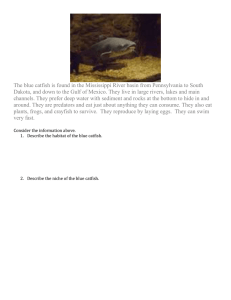
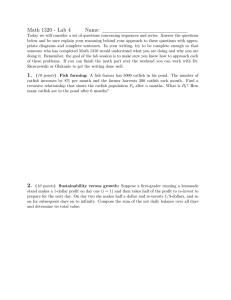
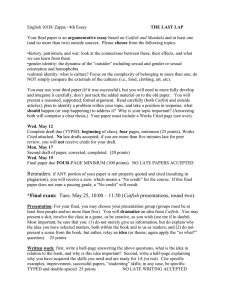
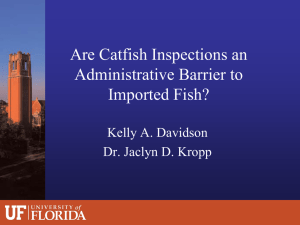
![vietnam[1].](http://s2.studylib.net/store/data/005329784_1-42b2e9fc4f7c73463c31fd4de82c4fa3-300x300.png)